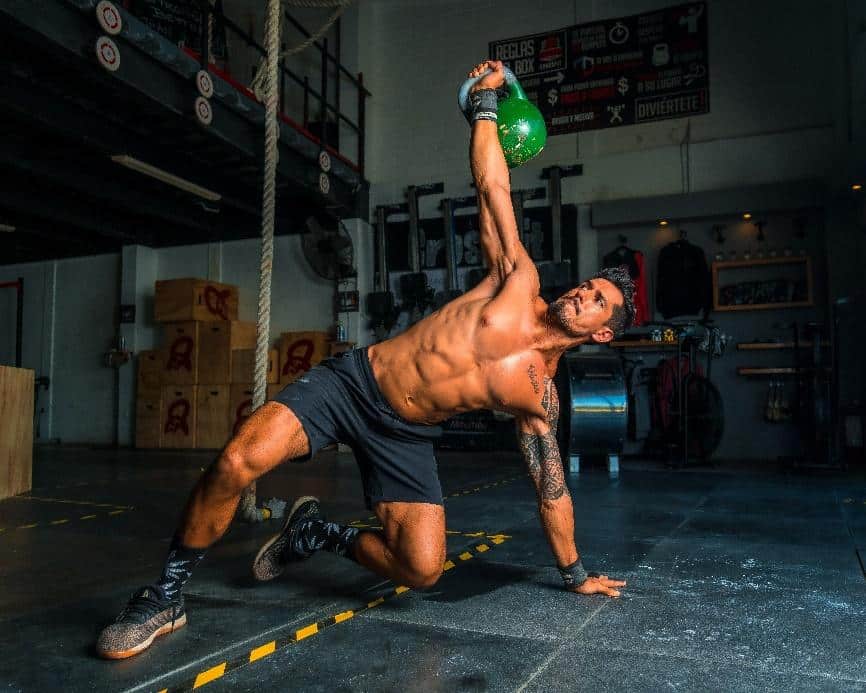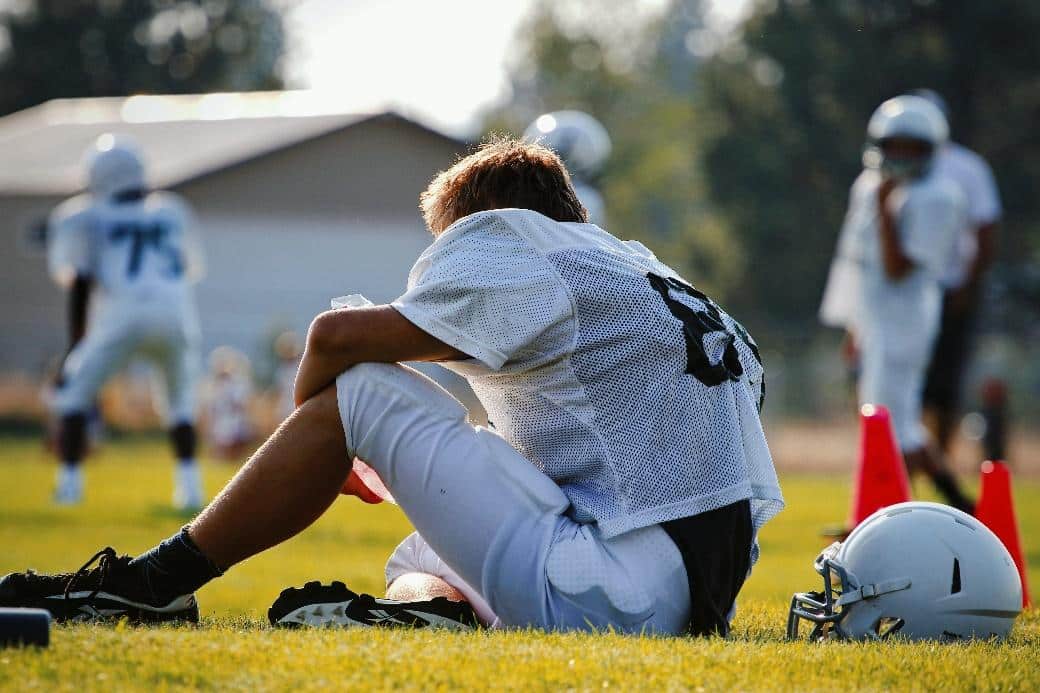30 de November de 2023
How to Break Through a Workout Plateau
What’s a Training Plateau And Why Does it Occur?

A training plateau is a hurdle commonly encountered by both professional athletes and amateur sports enthusiasts throughout their athletic journey. It refers to a stagnation in physical and performance adaptations that halts the progress observed until that point, despite continued training at the same or even higher intensity than before. This standstill in our athletic advancement can lead to frustration and may even result in a loss of motivation and commitment to training.
Ideally, one should strive to avoid encountering this point of stagnation. However, if one notices being in such a situation, there are various measures that can be applied to break through the training plateau and continue progressing in muscle mass, strength, or any athletic quality targeted (Gelman et al., 2022). Failure to consider multiple mechanisms in training programming can lead to encountering training plateaus sooner rather than later.
[banner_device_1]
Certain factors inevitably bring us closer to training plateaus, such as age, training level, and physiological ceiling. If we are young and beginners, we can experience significant and rapid improvements, with radical changes noticeable within a year. As we accumulate years and specialize in a discipline, like weightlifting, adding more weight to the bar becomes increasingly challenging. In the initial stages, we might have increased squat records by five kilograms at a time, but at a higher athletic level and age, we resort to using 0.25 kg plates in an attempt to break those records.
A clear example of this can be seen in muscle growth, which experiences a peak during young ages and beginner levels, where minimal training can lead to substantial changes. However, everything undergoes modifications with aging (Kataoka et al., 2023). While we cannot do much about the physiological ceiling, as it represents a challenging training plateau to overcome, we can always manage our training effectively to either continue progressing or mitigate losses. Nevertheless, beyond age and training level, there are numerous options that can distance us from and pull us out of training plateaus.
Progressive Overload: The Foundation for Avoiding and Overcoming Training Plateaus

Progressive overload is one of the fundamental training principles for achieving improvements in athletic performance (Plotkin et al., 2022). This principle involves modifying a training variable to present a new challenge to the body, such as adding an extra set, incorporating additional weight, or moving a load more quickly. Its foundation can be easily explained through the myth of Milo of Croton, a Greek athlete from the 6th century BC, renowned for his feats in various wrestling and strength competitions of that era.
According to legend, Milo’s training involved carrying a calf on his shoulders through the streets of Croton. When the calf was just days or weeks old, it posed little effort for Milo. However, each day, the animal gained weight, requiring the Greek athlete to bear an increasingly heavier load on his shoulders. This legend epitomizes the concept of progressive overload, where each day a bit more weight is added to the training, ensuring that the body faces a new challenge each time.
What happens if we fail to comply with progressive overload?
One of the reasons we face a training plateau is because we don’t adjust the loads while adhering to progressive overload. Numerous studies have shown that in just three or four weeks, our bodies have already adapted to the stimulus. Therefore, if we continue doing the same thing, we won’t see improvements (Gacesa et al., 2013; Gelman et al., 2022). Thus, one way to avoid a training plateau is to continually adjust the variables to ensure ongoing adaptations.
If we find ourselves on a training plateau due to following the same routine for a while, overcoming it is quite simple: do something different. You may need to add some more training sets, adjust the training intensity by increasing or decreasing it, try new stimuli such as variable resistance with resistance bands, or incorporate speed-based training to move the loads faster.
Periodization: Deload Weeks Matter, A Lot, for Avoiding and Overcoming Training Plateaus

Before diving into doing more sets and adding more weight to overcome a training plateau, it’s essential to understand that more is not always better. In fact, poorly planned progressive overload can set us back in our athletic goals instead of propelling us forward. An example of this is muscle gain, which may plateau, and if we continue to increase volume and intensity when what we actually need is rest, we may lose muscle mass due to overtraining (Amirthalingam et al., 2017).
This is where the art of coaching and knowledge of sports periodization come into play. Many times, more than we realize, the best thing we can do to overcome a training plateau is to rest. Both undertraining and overtraining can be detrimental to athletic performance. An illustration of this was the personal best improvements seen in many cyclists after the mandatory COVID-19 hiatus. Interestingly, after a period of several weeks with little or no training compared to their usual routines, they experienced enhanced performance.
Sports periodization involves various blocks, including volume accumulation, intensity intensification, and one often forgotten – deloading. If you find yourself on a training plateau and have been appropriately adding load and volume to your workouts, one reason you may be experiencing a plateau is that you need to rest. Try significantly reducing volume for a week and assess the outcome, possibly even considering a rest week with no workouts at all.
You Are Neglecting An Important Part of The Pie

How do you train? How long have you been doing it? Why do you train that way? The majority of people who go to the gym with the goal of increasing muscle mass focus on a moderate range of repetitions (6 – 14 repetitions) with moderate loads for those repetitions. Many of them, if not the majority, have not tried a block of high loads with low repetitions or a type of training with low loads and high repetitions. Across this continuum of intensities and repetitions, similar hypertrophic adaptations can be achieved (Schoenfeld et al., 2021). To overcome a training plateau with the goal of muscle growth, we can change training zones and introduce blocks with different loads and repetitions, increasing training variability.
If our training goal is strength and power, we will do the same, but in addition to varying the loads, we will focus on the speed at which we move them—an aspect that is often underutilized but has significant benefits for performance. There is a force-velocity curve where we can use very high loads that we can move at slow speeds, or very low loads that we can move at very high speeds. Working across the entire curve, not just one part of it, can help break through a training plateau.
[banner_device_2]
The same applies to endurance or any physical quality. If we aim to overcome a training plateau, we must be familiar with different training methods and explore their intricacies. In the case of endurance, we know that aerobic base can be achieved with low intensities and high volumes, but also with very high intensities and very low volumes. We may also encounter an endurance plateau that can be easily overcome by introducing strength training, either generally with weights or by training on inclines (Balsalobre-Fernández et al., 2016).
What all physical qualities have in common is that they are interconnected, and you can see significant improvements in your squat after following a hip mobility program. We simply need to understand, or consult with someone who does, the fundamentals of our sport and the factors that contribute to improvement. There are many aspects that may escape our notice, and focusing on them can help break through a training plateau that we hadn’t seen before.
A Wide Library of Exercises as a Compass to Break Through the Training Plateau

Broscience (the “science” passed around in gyms) is based on the principle of variability, advocating for changing training exercises regularly. In a way, broscience is correct because significant improvements can be achieved by varying exercises rather than sticking to the same ones (Fonseca et al., 2014). However, the crucial point is not just changing exercises like trading collectibles; it’s about selecting the best movements for each individual and moment. Delving into exercise selection and biomechanics would lead us into an endless world. Therefore, we’ll briefly summarize in this section why exercises play a vital role in strength training plateaus.
Every muscle can be trained with a long list of exercises, but many of them serve the same function. One reason we encounter plateaus in muscle mass or strength and power gain is that we need to address a weak link in the chain. Take powerlifting, for example, which comprises three basic movements: squat, bench press, and deadlift. Many athletes reach a point of stagnation because they overuse these movements and neglect the weak links preventing improvement.
The coach plays a pivotal role in overcoming training plateaus caused by weak links that need improvement. If we notice that our athlete has hit a plateau in the bench press, it may be because we need to enhance their shoulders, chest, or triceps instead of continuing with the bench press and its variations. The same applies to the squat and deadlift, which may face hindered progress due to weakness in certain muscles or lack of mobility in specific joints. To avoid and overcome the training plateau, we must identify the weak link preventing improvement and focus on it. The best tool we have for this is to carefully select exercises and vary them logically.
Individualization: You Are You, and Others Are Others

With the same training, we can observe how one athlete substantially improves performance while another worsens. The first is far from a training plateau, and the second is either undertrained or overtrained. The only way to avoid and overcome the training plateau in these cases is to individualize the training prescription for each athlete. We can take it a step further and should do so by individualizing the training each day for each athlete because performance can vary significantly from one day to another due to factors unrelated to training: poor sleep, stressful personal situations, etc.
It is normal to think that individualizing each athlete’s session, especially on a daily basis, is impossible. However, thanks to Velocity-Based Training (VBT), we can come quite close to precision individualized training. This fifth and final method to avoid and overcome a training plateau is the most crucial of all and the one that can significantly enhance our performance. To achieve this, we need to have basic knowledge of Velocity-Based Training (VBT) and a device like the Vitruve, which provides real-time parameters such as the bar speed.
1RM every day to know our loads and whether we need to rest
We have previously seen that deloading is a fundamental part of periodization, and if we neglect it, we can fall into a training plateau. There is a straightforward method to understand how our athlete is feeling each day, and it involves measuring their performance during warm-up. Something as simple as asking them to perform three vertical jumps or lift a load at maximum speed will reveal their 1RM for that day. If that day’s 1RM matches their usual, the athlete is not carrying fatigue, and training can proceed. If the 1RM developed that day is higher, the athlete can apply more force, and the loads will be increased. If the 1RM is significantly lower than usual, the athlete is fatigued and should focus on recovery.
Imagine that as an athlete, or as the person you are coaching, you follow a traditional program that instructs you to do 3 x 3 at 80% 1RM. If you train on a day when your 1RM is higher than usual, you will be moving a load theoretically below what you should (undertraining). If you train on a day when your 1RM is lower than usual, you will be applying a very high stimulus to your body (overtraining). Both scenarios, if prolonged, can lead to a plateau. The best way to avoid and overcome it is to know your 1RM every day and work based on it.
Numerous studies have explored the differences in strength and power effects when adjusting loads or not (Jiménez-Reyes et al., 2021). The results show that, without load adjustments, three scenarios emerge: some athletes improve with training, others waste time as they neither improve or worsen, and a third group, the most unfortunate, worsens with training. On the contrary, when adjusting loads for each athlete with Velocity-Based Training (VBT), everyone improves to some extent, as they all train with intensity and volume tailored to their needs. This makes VBT an indispensable strategy to avoid and overcome the training plateau.
Invisible Training as a Aid to Overcoming the Training Plateau

Beyond training hours, there are external factors that can also lead us to that plateau. No matter how well we adjust the loads, engage in progressive overload, and everything else, there are habits and events that occur outside of training that can directly lead us to a training plateau. Although there are many more, we emphasize the two fundamental ones: diet and rest.
A Car Won’t Run Without Gasoline
Countless individuals “waste” their time every day in the gym, seeking muscle mass gain without considering the macronutrients they should be consuming. A bodybuilder without sufficient protein won’t have the bricks to build their wall, or muscle fibers. Without an optimal amount of carbohydrates, they may train with less intensity than they would with an adequate supply. Fats regulate our hormones, such as testosterone, and are vital for the perfect functioning of our body.
If these three macronutrients are not ingested in their minimum proportions, we won’t gain muscle mass, no matter how many sets we do in the gym. Additionally, micronutrients (vitamins and minerals) play a crucial role in ensuring that our body functions like a Swiss watch in each of the mechanisms regulating muscle hypertrophy. The same applies to gains in strength and power, especially concerning the quantity of carbohydrates. Many athletes with a deficient diet find themselves on a training plateau that they could overcome simply by modifying the amount of carbohydrates they consume and the types of foods they use.
Sleep Determines Training Plateau
We couldn’t conclude an article on overcoming a training plateau without mentioning the importance of sleep in this process. If you are not getting between seven and nine hours of sleep each day and find yourself stuck in a training plateau, it is the first thing we recommend doing. During nocturnal sleep, the processes of recovery and training adaptations are accelerated. Falling short of the recommended minimum threshold of seven hours of sleep each night directly and negatively influences the training plateau, and a lack of sleep is also associated with a general deterioration in health and bodily functions.
[banner_guide]
References
Amirthalingam, T., Mavros, Y., Wilson, G. C., Clarke, J. L., Mitchell, L., & Hackett, D. A. (2017). Effects of a modified German volume training program on muscular hypertrophy and strength. Journal of Strength and Conditioning Research, 31(11), 3109–3119. https://doi.org/10.1519/JSC.0000000000001747
Balsalobre-Fernández, C., Santos-Concejero, J., & Grivas, G. V. (2016). Effects of Strength Training on Running Economy in Highly Trained Runners: A Systematic Review With Meta-Analysis of Controlled Trials. Journal of Strength and Conditioning Research, 30(8), 2361–2368. https://doi.org/10.1519/JSC.0000000000001316
Fonseca, R. M., Roschel, H., Tricoli, V., De Souza, E. O., Wilson, J. M., Laurentino, G. C., Aihara, A. Y., De Souzaleão, A. R., & Ugrinowitsch, C. (2014). Changes in exercises are more effective than in loading schemes to improve muscle strength. Journal of Strength and Conditioning Research, 28(11), 3085–3092. https://doi.org/10.1519/JSC.0000000000000539
Gacesa, J. Z. P., Klasnja, A. V., & Grujic, N. G. (2013). Changes in Strength, Endurance, and Fatigue During a Resistance-Training Program for the Triceps Brachii Muscle. Journal of Athletic Training, 48(6), 804–809. https://doi.org/10.4085/1062-6050-48.4.16
Gelman, R., Berg, M., & Ilan, Y. (2022). A Subject-Tailored Variability-Based Platform for Overcoming the Plateau Effect in Sports Training: A Narrative Review. International Journal of Environmental Research and Public Health, 19(3). https://doi.org/10.3390/IJERPH19031722
Jiménez-Reyes, P., Castaño-Zambudio, A., Cuadrado-Peñafiel, V., González-Hernández, J. M., Capelo-Ramírez, F., Martínez-Aranda, L. M., & González-Badillo, J. J. (2021). Differences between adjusted vs. non-adjusted loads in velocity-based training: consequences for strength training control and programming. PeerJ, 9. https://doi.org/10.7717/PEERJ.10942/SUPP-1
Kataoka, R., Hammert, W. B., Yamada, Y., Jun, ·, Song, S., Seffrin, A., Kang, A., Spitz, R. W., Wong, V., & Loenneke, J. P. (2023). The Plateau in Muscle Growth with Resistance Training: An Exploration of Possible Mechanisms. Sports Medicine 2023, 1–18. https://doi.org/10.1007/S40279-023-01932-Y
Plotkin, D., Coleman, M., Van Every, D., Maldonado, J., Oberlin, D., Israetel, M., Feather, J., Alto, A., Vigotsky, A. D., & Schoenfeld, B. J. (2022). Progressive overload without progressing load? The effects of load or repetition progression on muscular adaptations. PeerJ, 10. https://doi.org/10.7717/PEERJ.14142
Schoenfeld, B. J., Grgic, J., Van Every, D. W., & Plotkin, D. L. (2021). Loading Recommendations for Muscle Strength, Hypertrophy, and Local Endurance: A Re-Examination of the Repetition Continuum. Sports (Basel, Switzerland), 9(2). https://doi.org/10.3390/SPORTS9020032
